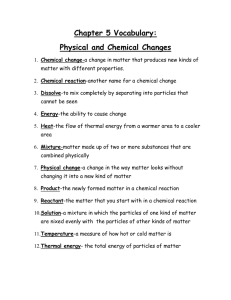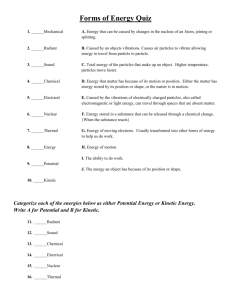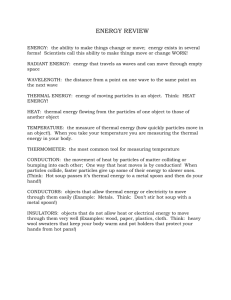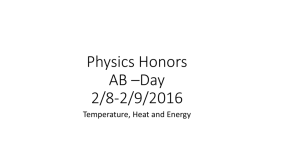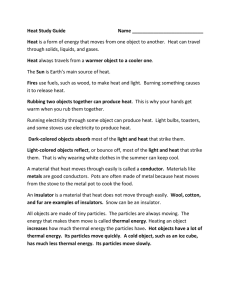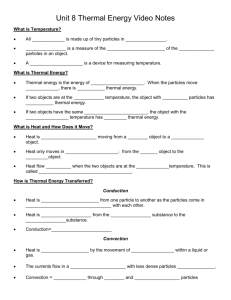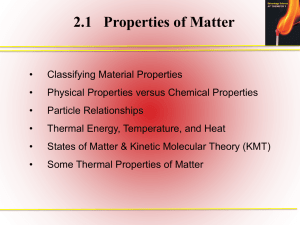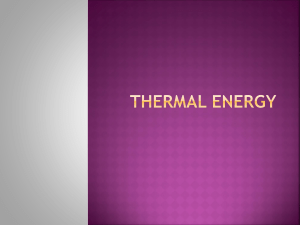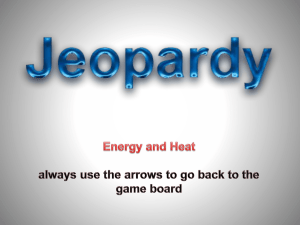Energy and energy resources
advertisement
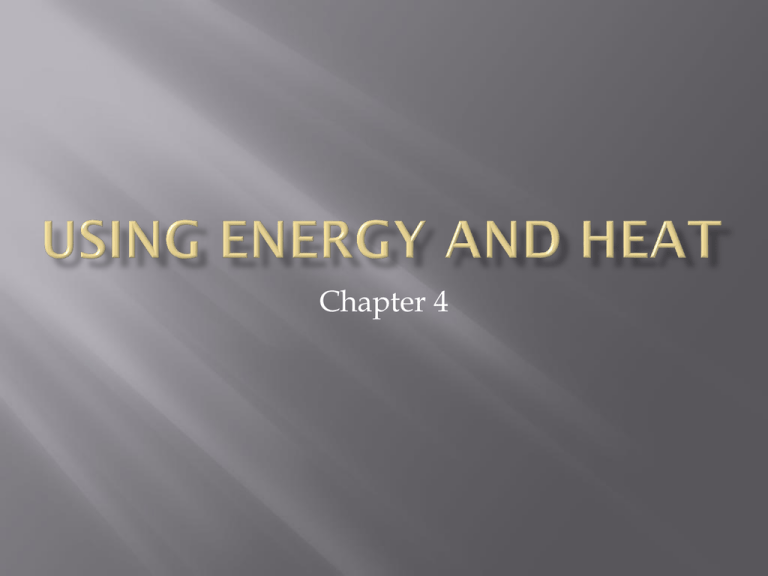
Chapter 4 Change in position or motion. Joules-Unit of energy. Objects with potential energy have the possibility to cause change. It depends on the height and weight(mass) of the object. The energy is released when chemical reactions occur. Fusion(join) Fission(split) The faster the object moves, the more kinetic energy it has. Depends on mass and speed. System-a collection of interacting objects, parts, or ideas that act together as a whole. Anything in the environment is not a part of the system. Open-a system that exchanges matter or energy with the environment. Closed-a system that does not exchange matter with the environment(energy can be exchanged). Isolated-a system in which neither energy nor matter can be exchanged. A wave is a disturbance that transfers energy form one place to another without transferring matter. Energy cannot be created or destroyed. It can only change forms or move from one region to another. Electrical to Radiant. Radiant to Chemical Source-The Sun and the Earth’s Interior. Solar Hydroelectric Wind Geothermal Biomass Ethanol Inexhaustible resource-a resource that cannot be used up. Solar is converted by water becoming steam, the steam turns a generator. This transforms mechanical energy to electric energy. Hydroelectric Fossil Fuels-the remains of ancient organisms that can be burned for energy. Creates chemical energy. -coal -natural gas -petroleum(oil) 86% of the energy used in the U.S. Global Warming-release carbon dioxide. Acid rain- Burning Fuels Nuclear Uranium-Nuclear Reactor -Produce radioactive waste Depends on the movement of particles in the material. Heat-The movement of thermal energy from a region of higher temperature to a region of lower temperature. 1. 2. 3. Particles make up all matter. Particles are in constant random motion. Particles collide. Kinetic Energy is transferred form one material to another when their particles collide. Units-kelvin (K)/Celsius(C)/Fahrenheit(F) Absolute Zero= –459.67F/–273.15°C Absolute zero-the lowest theoretically possible temperature. Atoms stop all movement. At higher temperatures, the particles are moving faster, requiring more space. Conduction-the transfer of thermal energy due to collisions between particles. Convection-the transfer of thermal energy by movement of the particles from part to another. Radiation-the transfer of thermal energy by electromagnetic waves. Melting/Freezing-Adding or taking away thermal energy. Vaporization/Condensation Sublimation/Deposition
